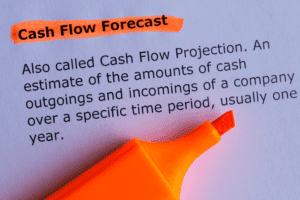The Cost Principle requires that prepaid expenses be recorded at their original cost, not at an expected future value. For instance, Big Corp. paid $240,000 on January 1 for a three-year equipment maintenance contract. The payment was recorded as a prepaid expense, with $80,000 allocated to the current year and the remaining $160,000 to long-term assets. If a company pays $12,000 for a year’s rent in advance, the prepaid rent account will be debited for $12,000 and the cash account will be credited for the same amount.
Recording the Initial Payment
- For example, if a business pays for a legal retainer for one year of service, the value of that retainer will be amortized over twelve months.
- Insurance policies are a common example of prepaid expenses, and they can be quite costly upfront.
- This means not expensing all prepaid amounts immediately, as some may not have been fully utilized.
- As an example, if a business prepaid its insurance one year in advance at a cost of $12,000, the expense would be amortized at $1,000 per month.
This transformation impacts expense recognition, which is crucial for aligning costs with revenues. By adhering to the matching principle, businesses ensure that expenses are recorded in the same period as the revenues they help generate. Proper documentation and periodic bookkeeping and payroll services review of prepaid assets are essential to maintain accuracy.
- When the expense is incurred, the prepaid expense account is reduced by the amount of the expense, and the expense is recognized on the company’s income statement in the period when it was incurred.
- For this reason, a business must amortize, or calculate, the monthly cost for a prepaid expense.
- As time progresses, the prepaid expense account is adjusted to reflect the consumption of these benefits.
- At the end of twelve months, the asset account would show a balance of zero for the insurance premium and a total of $12,000 in the insurance expense account.
- CGAA will not be liable for any losses and/or damages incurred with the use of the information provided.
- For example, if a business pays $120,000 upfront for a 12-month insurance policy, it will initially book the full amount as a debit to prepaid insurance and a credit to cash.
- Prepaid expense amortization is important for accurate financial reporting, ensuring that the expense of the prepaid asset is recognized in the appropriate period, rather than all at once.
Adjusting Entries and Accuracy
The quick ratio, while also being a liquidity ratio, only factors in an organization’s most liquid assets such as cash and cash equivalents that can be converted the quickest, hence the same. The quick ratio is calculated by dividing cash, or an organization’s most liquid assets such as cash equivalents, marketable securities, and accounts receivable by its current liabilities. As a result of not being a cash equivalent or highly liquid, prepaid expenses do not impact the quick ratio. This is another type of prepaid expenses records in the current section of the Balance Sheet. When an entity wants to advertise its products or services, that entity would need to pay the advertising agency or TV channel so that they can advertise for that entity.
Amortization of Prepaid Expenses: A Comprehensive Guide
Prepaid expenses, on the other hand, don’t impact the quick ratio because they’re not cash equivalents or highly liquid. The current ratio is a useful metric to evaluate a company’s ability to meet its short-term obligations. When you approve the invoice, the system will create a Prepayment Journal and a Journal for each amortized amount. You will receive the message Line total must equal amortization total and will not be able to save the schedule until this is corrected. Thus, ABC has paid US$15,000 for health insurance on 01 January 2019 to cover the health insurance premium until the end of 31 December 2019.
GAAP Principles
An expense is essentially a cost incurred by a business or individual to generate revenue or maintain operations. It can be a straightforward expense, like buying office supplies, or a more complex one, like prepaid expenses. It would be entered into the general ledger as a debit of $12,000 to the current asset account and a are prepaid expenses amortized credit for the same amount to the cash account.
These platforms allow for the scheduling of recurring journal contra asset account entries, reducing the risk of human error and ensuring timely adjustments. By leveraging technology, businesses can streamline their financial processes, improving the accuracy and efficiency of their accounting practices. In practice, there are many prepaid items, thus in order to manage those prepayment properly, accountants or bookkeeping staff shall need to maintain a proper prepayment schedule.
Amortization and Accounting
Prepaid assets are different from prepaid cards or prepaid debit cards, which are payment methods that allow you to spend money that you have already loaded onto the card. Prepaid cards are not considered as assets, because they do not have future economic benefits. A prepaid expense is an advance payment for goods or services that are received in the future. A prepaid expense is recorded as a type of asset on the balance sheet and as an expense on the income statement when it’s utilized.





